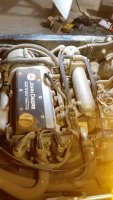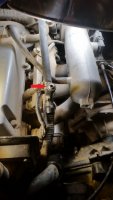farmerjan
Herd Master
- Joined
- Aug 16, 2016
- Messages
- 11,878
- Reaction score
- 47,489
- Points
- 758
- Location
- Shenandoah Valley Virginia
One other thing, on the cheaper products.... besides what @Bruce has said..... increased number of people in the world means we need increases in jobs.....so the "cheap use it up and buy another" is providing jobs for more and more people....
so where do you start drawing the line.... and what do we do with all the throw out stuff now, as it piles up and polutes our environment.
I had to replace 2 valves for the washing machine here, because they no longer make the small washers that go in the old one so that I could just fix it... So spent about $20 bucks for something that should have only cost a couple dollars to fix... No one wants to fix stuff nowadays....and companies cannot keep parts in for something that will only go bad once in 20-30 years.....
But the costs down the road to the destruction of the environment.... with just the waste of thrown out stuff.... will boggle your mind.
And we evolve.... just as we went from planting sticks, to horse power to internal combustion machines.... it is not all bad... but this is a finite world.... and we are going to have to limit our population or we will destroy it ....... one way or another.
so where do you start drawing the line.... and what do we do with all the throw out stuff now, as it piles up and polutes our environment.
I had to replace 2 valves for the washing machine here, because they no longer make the small washers that go in the old one so that I could just fix it... So spent about $20 bucks for something that should have only cost a couple dollars to fix... No one wants to fix stuff nowadays....and companies cannot keep parts in for something that will only go bad once in 20-30 years.....
But the costs down the road to the destruction of the environment.... with just the waste of thrown out stuff.... will boggle your mind.
And we evolve.... just as we went from planting sticks, to horse power to internal combustion machines.... it is not all bad... but this is a finite world.... and we are going to have to limit our population or we will destroy it ....... one way or another.


















